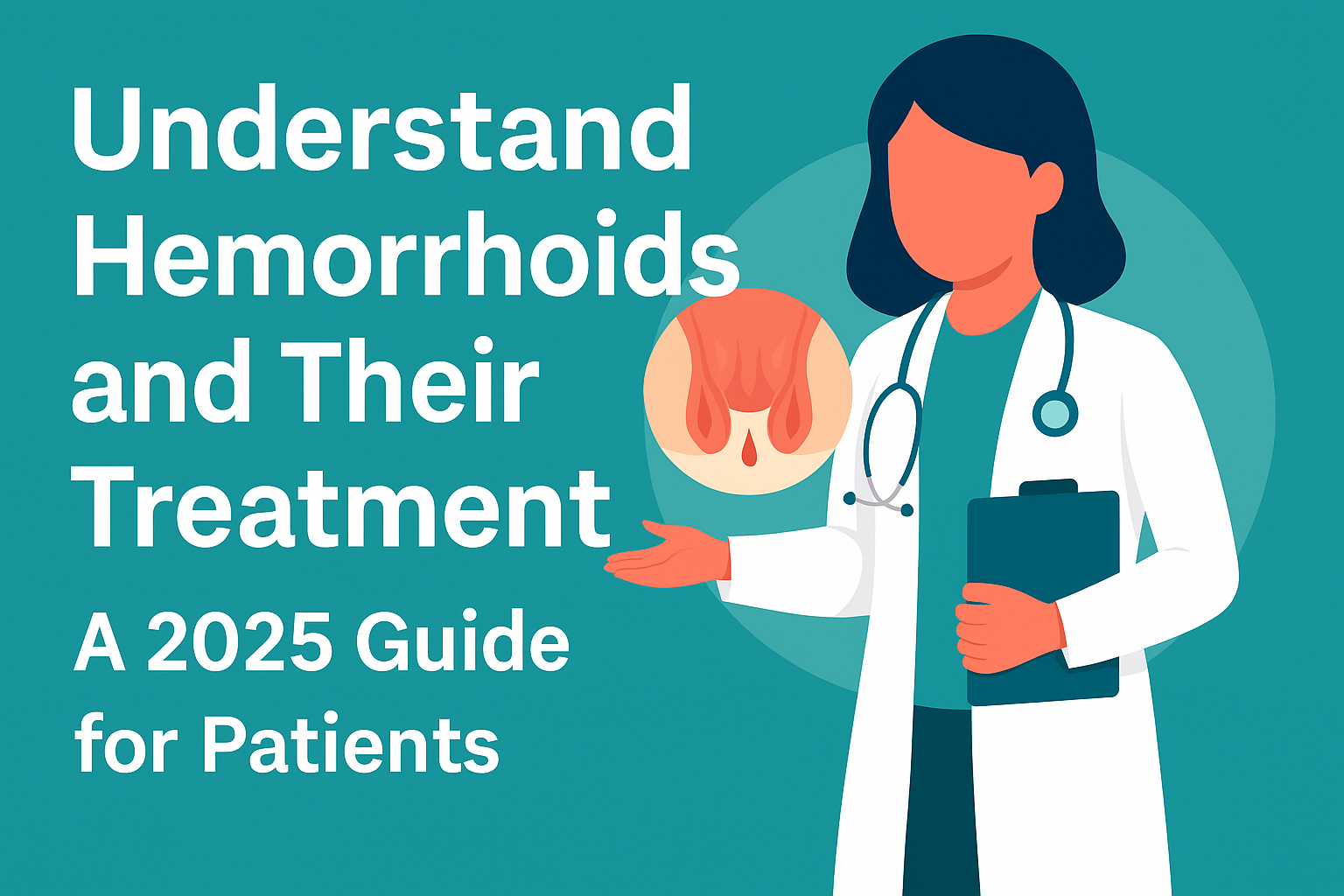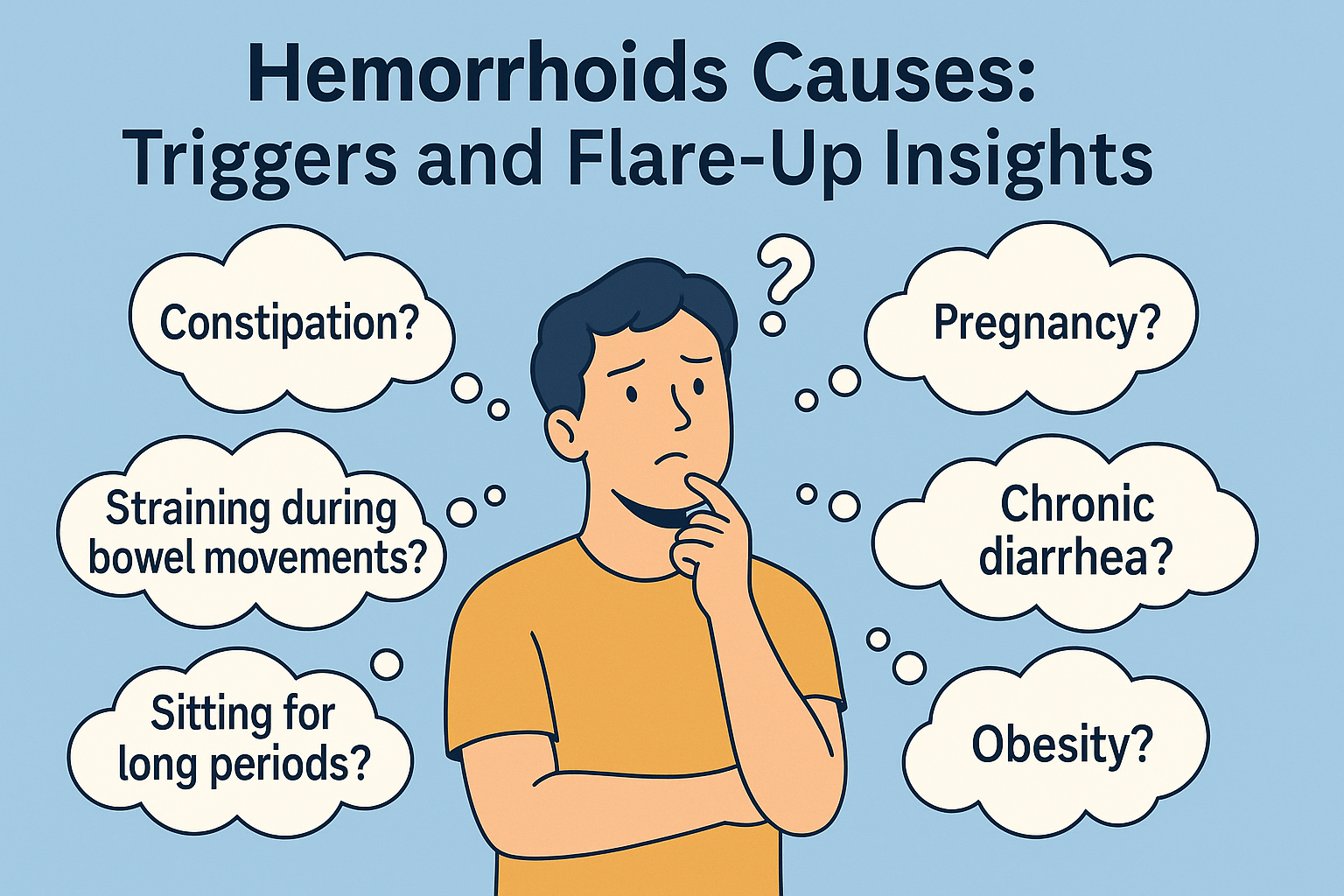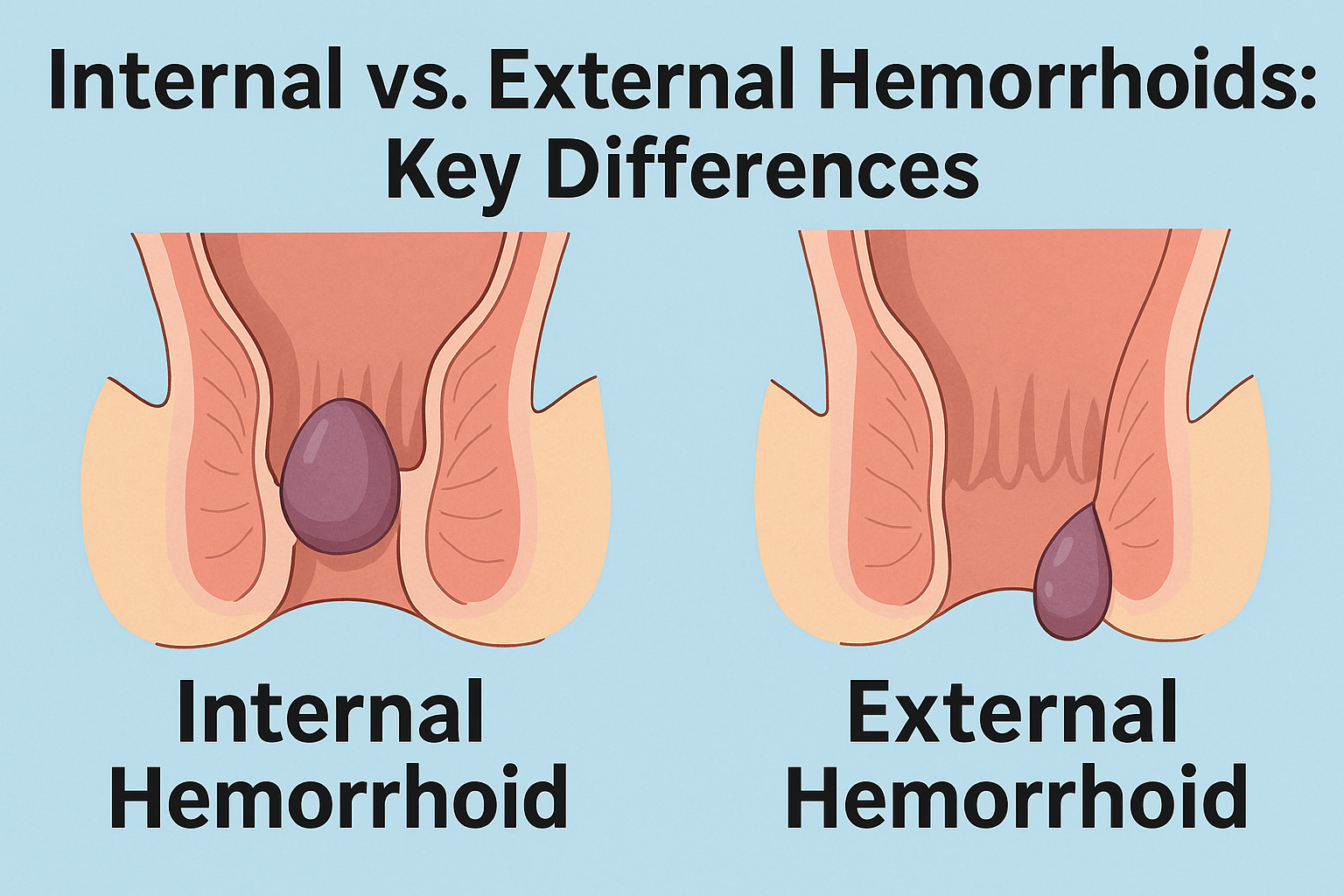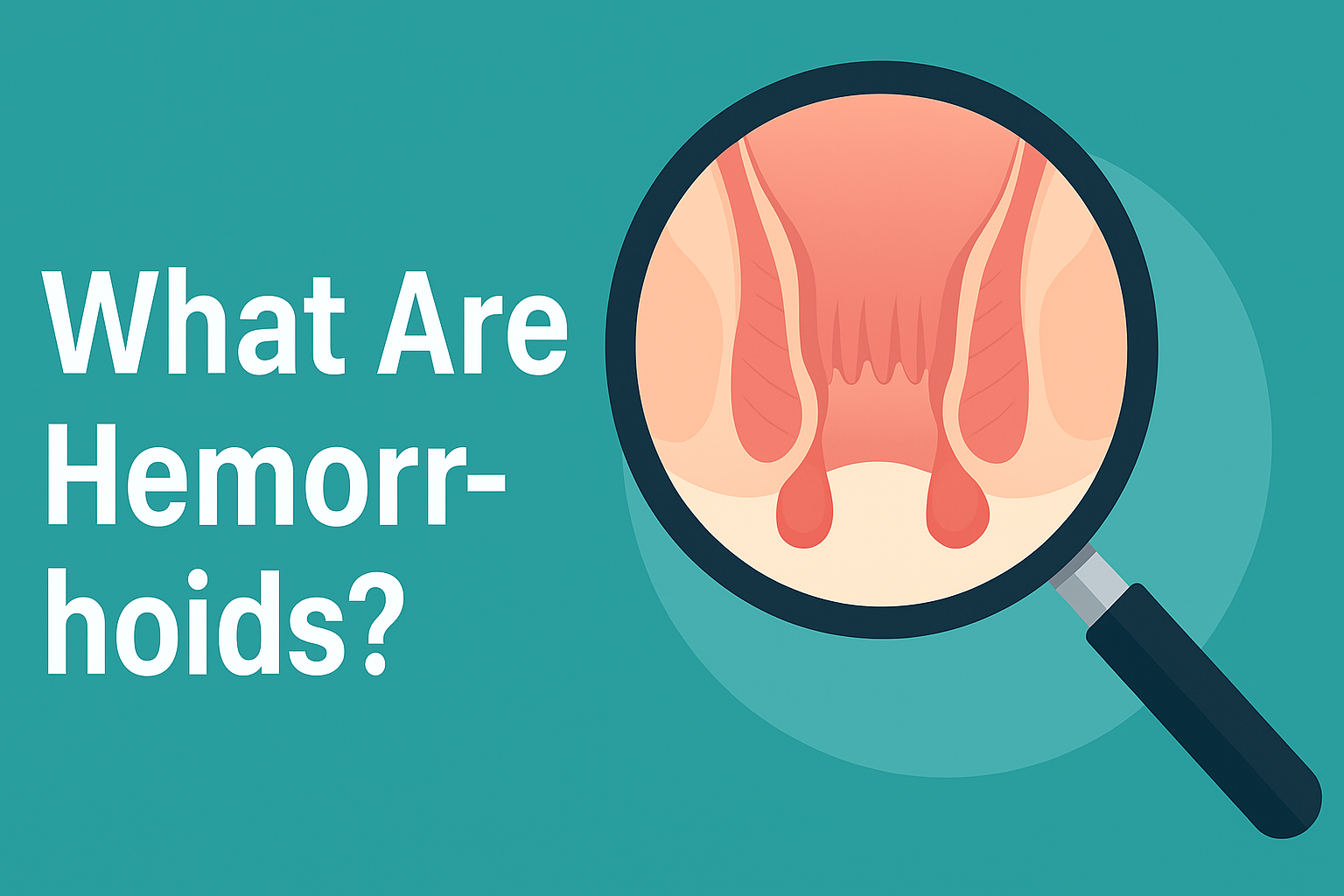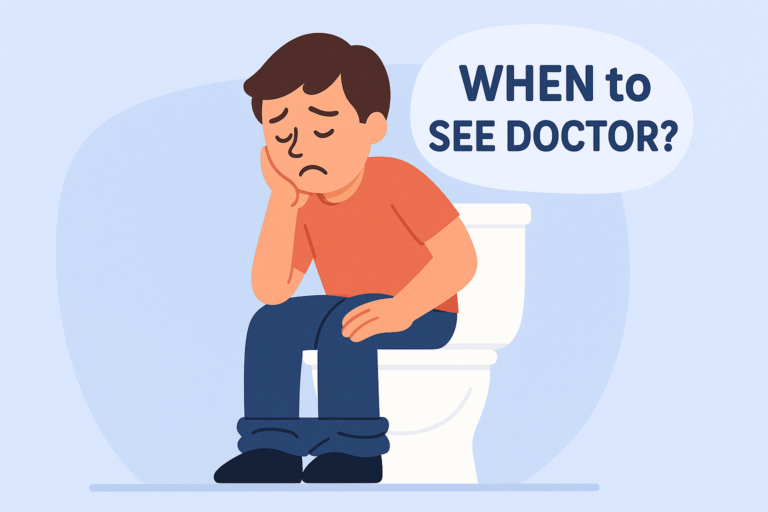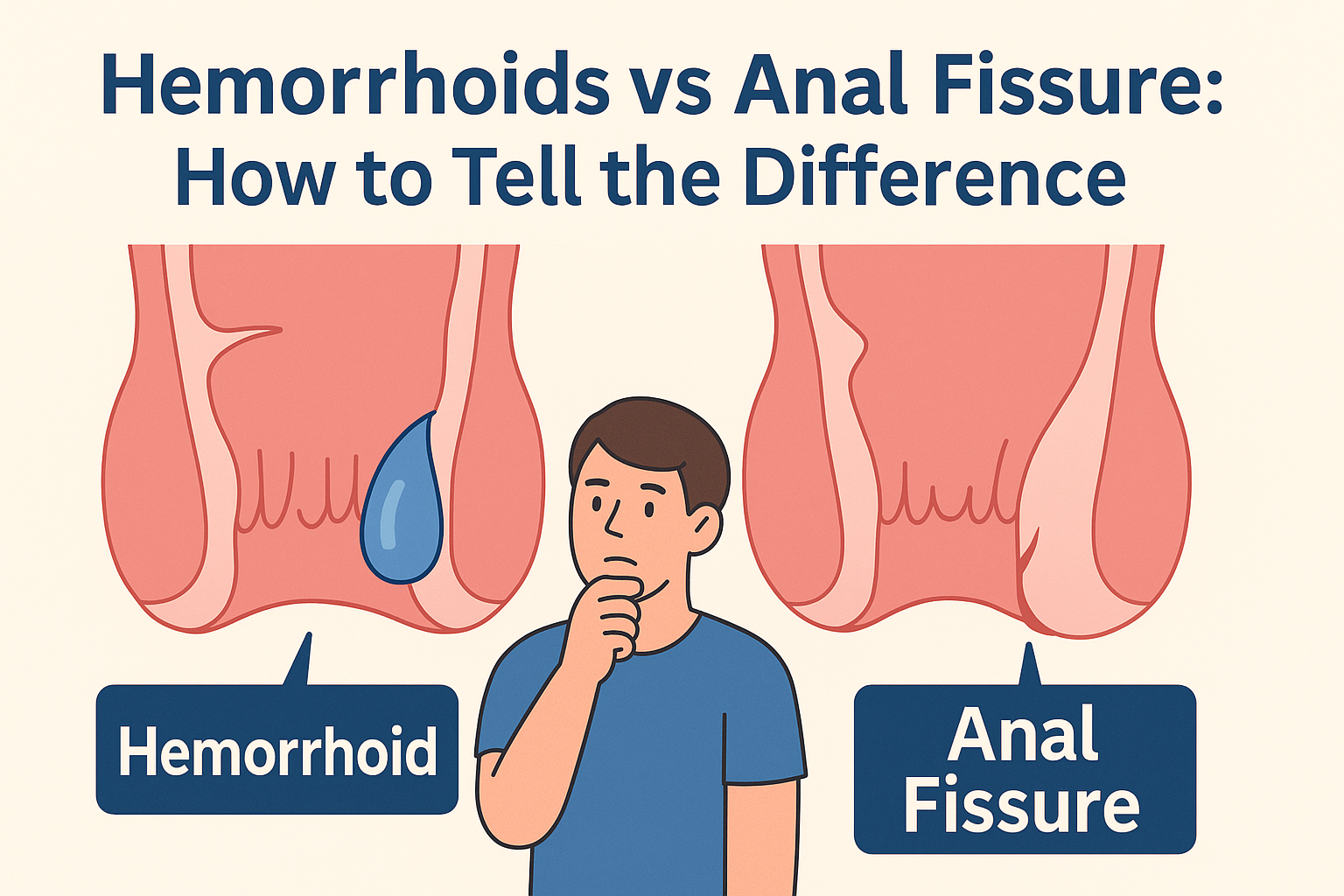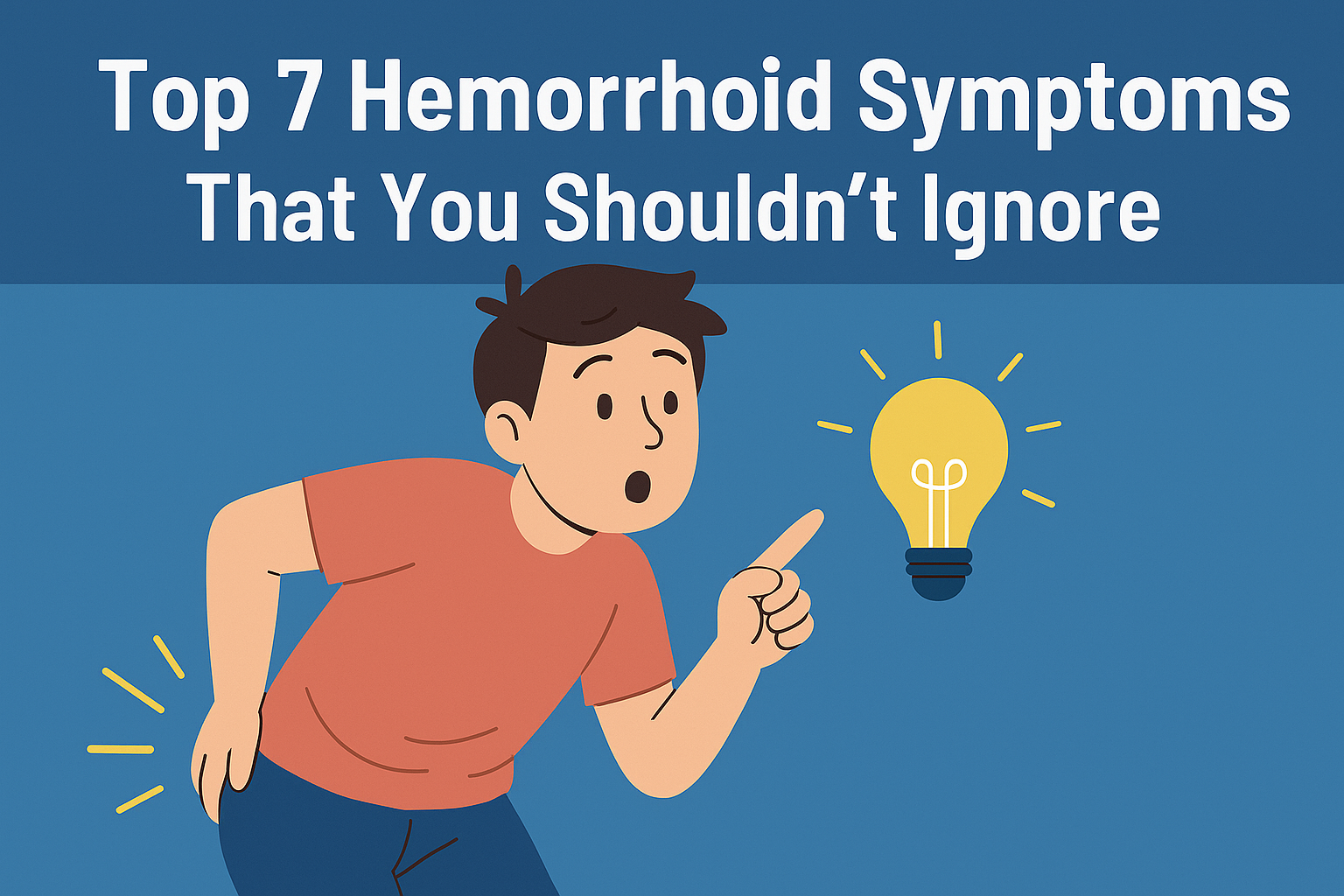
Hemorrhoids can be tricky to identify at first. Many people mistake early signs for temporary digestive discomfort or poor hygiene. However, recognizing the hemorrhoid symptoms early can prevent unnecessary pain and complications. In this article, we’ll walk through the seven most common hemorrhoid symptoms—what they feel like, what causes them, and how to respond appropriately. Understanding these hemorrhoid symptoms is crucial for timely treatment.
Symptoms 1. Rectal Itching
One of the earliest and most common hemorrhoid symptoms is persistent itching in the rectal area. This irritation is often caused by mucus or stool leakage from internal hemorrhoids, which can irritate the surrounding skin. Moisture, improper wiping, or poor hygiene can worsen the sensation.
Relief Tips: Use unscented wet wipes with Witch Hazel, keep the area dry and clean, and avoid scratching to prevent further inflammation.
Symptoms 2. Swelling Around the Anus
External hemorrhoids often lead to visible or palpable swelling near the anus. This may feel like a soft bump or lump, which can be tender to the touch or when sitting. If swelling becomes firm and painful, it might indicate a thrombosed hemorrhoid.
If the swelling worsens or becomes intensely painful, consult a doctor promptly—especially if it’s sudden and accompanied by a bluish discoloration.
Symptoms 3. Bright Red Bleeding During Bowel Movements
Bright red blood on toilet paper or in the toilet bowl is a hallmark sign of internal hemorrhoids. Unlike dark blood (which may indicate deeper gastrointestinal issues), hemorrhoidal bleeding is typically fresh and visible after wiping.
Tip: If the bleeding lasts more than a few days or is heavy, seek medical evaluation to rule out other serious conditions such as anal fissures or colorectal disease.
Symptoms 4. Mucus Discharge or Wetness Sensation
Internal hemorrhoids may produce mucus discharge, leading to a sensation of wetness or soiling in the anal area. This can be particularly bothersome during physical activity or long periods of sitting.
Management includes using a gentle barrier cream to protect the skin, wearing breathable underwear, and practicing good hygiene.
Symptoms 5. Discomfort or Pain When Sitting or Wiping
While internal hemorrhoids are often painless, external or thrombosed hemorrhoids can cause significant pain, especially when pressure is applied—like during prolonged sitting or wiping after a bowel movement.
Tip: Sit on a cushion or donut pillow, and replace rough toilet paper with soft, unscented wipes. Sitz baths may also relieve pain and inflammation.
Symptoms 6. Feeling of Fullness or Incomplete Evacuation
Many people with hemorrhoids report a persistent feeling of fullness in the rectum even after having a bowel movement. This is often due to swollen hemorrhoidal tissue causing obstruction or pressure in the anal canal.
Self-care includes improving dietary fiber intake and avoiding straining. If symptoms persist, medical examination may be needed to rule out rectal prolapse or tumors.
Symptoms 7. Prolapsed Tissue Sensation
In more advanced cases of internal hemorrhoids, the swollen tissue may protrude through the anus, especially during bowel movements. This can feel like a soft bulge or lump and may retract on its own or require manual repositioning.
Grades III and IV hemorrhoids may require surgical intervention. Early-stage prolapse can often be managed with lifestyle adjustments and topical treatments.
Conclusion
Understanding these seven key symptoms can help you take action early, before hemorrhoids worsen and interfere with your quality of life. Don’t ignore recurring bleeding, discomfort, or visible swelling. Whether it’s making simple lifestyle changes or consulting a medical professional, early awareness leads to faster relief.
References
- Mayo Clinic. (2023). Hemorrhoids. Retrieved from https://www.mayoclinic.org/diseases-conditions/hemorrhoids
- Cleveland Clinic. (2022). Hemorrhoids: Causes, Symptoms and Treatment. Retrieved from https://my.clevelandclinic.org/health/diseases/15103-hemorrhoids
- Reddit Users’ Experiences:


